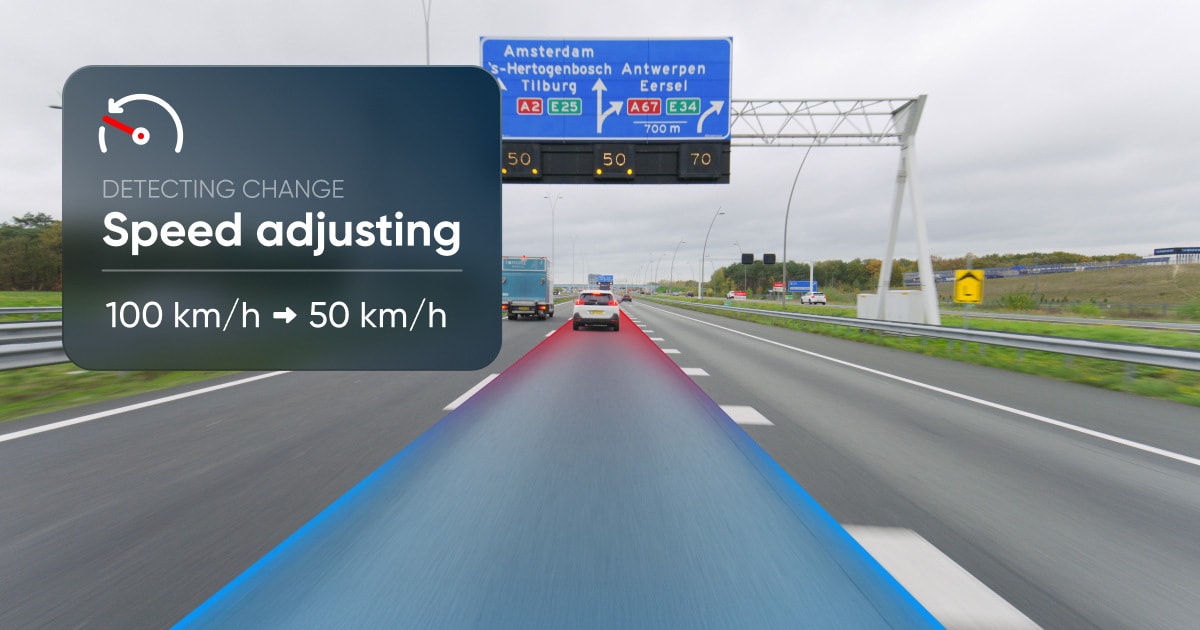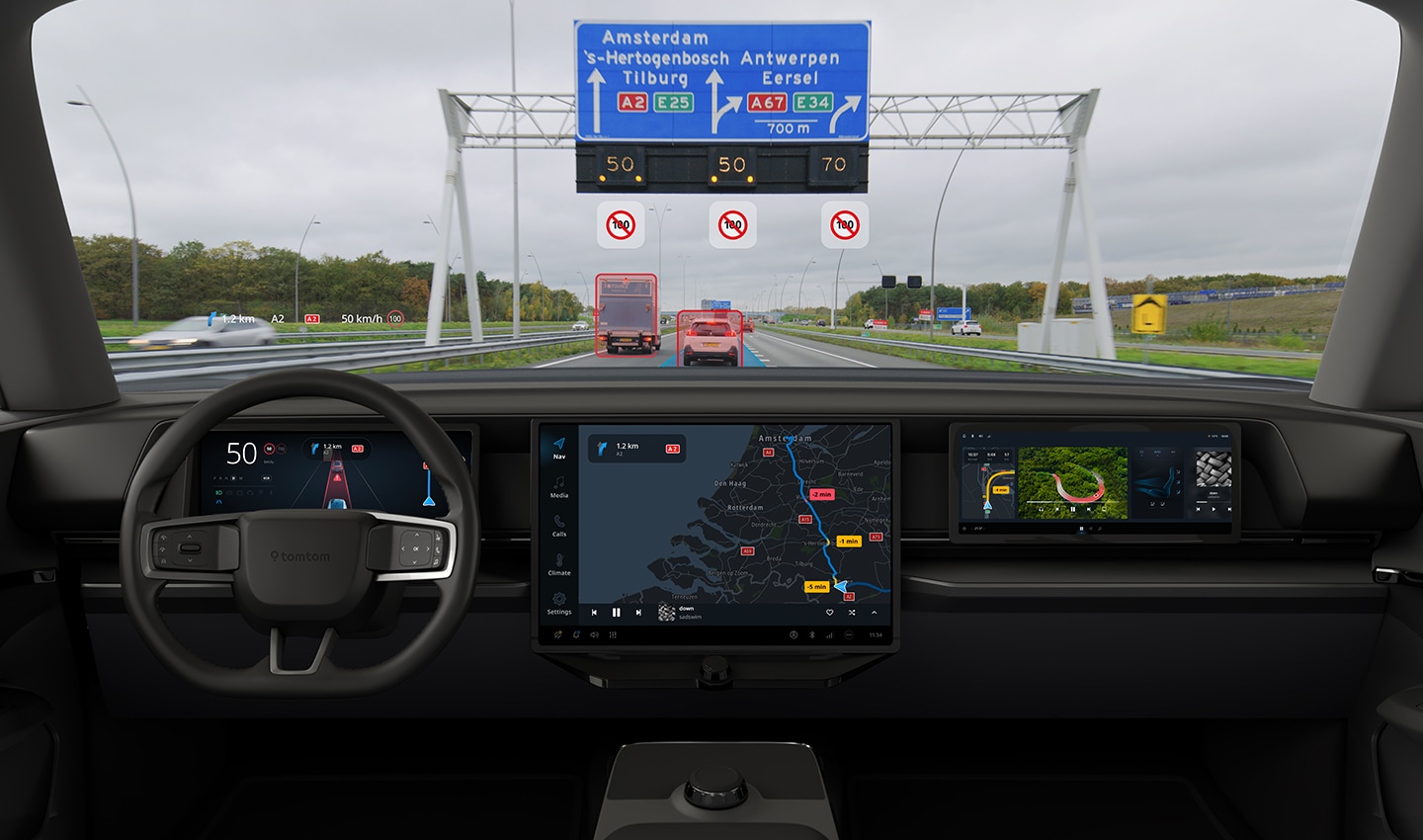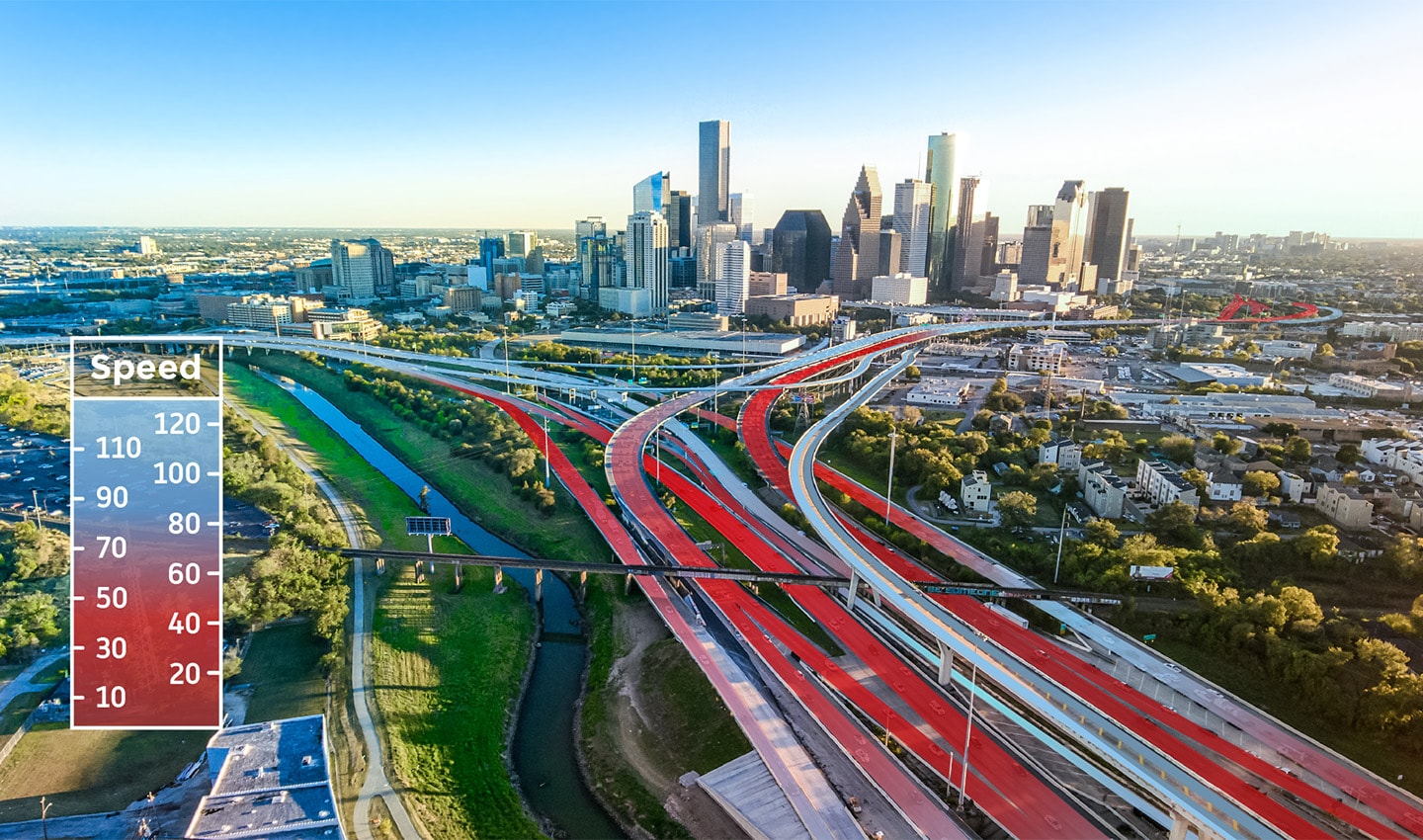
Intelligent Speed Assistance (ISA) is making major inroads in Europe. But how does it make roads safer, how do maps contribute to its effectiveness and is there a case for making it a global standard? We sat down with road safety expert David Ward to see what’s next for ISA tech and regulation.
When it comes to making our roads safer, you’d be hard-pressed to find someone who lives and breathes this belief more strongly than David Ward. He can trace his personal connection to the cause all the way back to the 70s. As a motor sports enthusiast, he was already aware of the many risks of driving. One day, on the way home from watching a race at Brands Hatch, David had his own brush with danger, getting involved in a head-on collision that drove home the importance of safety systems. “I’m here today because I was wearing a seatbelt,” he affirms.David has worked in road safety, sustainable transport, international development and UK politics for over 35 years. Today, he is the President of the Towards Zero Foundation (TZF), a UK charity campaigning for a world free of road fatalities. David also helped establish one of the TZF’s flagship initiatives – the Global New Car Assessment Program (Global NCAP), where he currently serves as Executive President.
In his many roles over the years, David has seen how regulation, consumer standards and technological innovation intersect to advance safety. Now, as we approach the middle of the UN’s Decade of Action for Road Safety, it feels like a fitting point to reflect on the advances that have been made and where progress needs to accelerate. From David’s perspective, that means investing in the technologies we have here and now to support safe driving – like Intelligent Speed Assistance (ISA) – and making them a global standard.
The world needs safer roads. Technology can help us get there
Every year, more than one million people are killed in road crashes and millions more are seriously injured. According to the World Health Organization, 92% of these road fatalities happen in low- and middle-income countries. With these countries becoming more motorized, the pressure is on to reduce dangers and deaths on their roads.
Vehicle tech and safety standards play a huge role in improving overall road safety. That’s reflected in the UN’s Road Safety Strategy, where safer vehicles is one of its key pillars. David notes, “Over the last 30 to 40 years in Europe, improved vehicle safety and technology has been the biggest factor in more or less halving road deaths.”
He also makes the point that to drive progress, it takes a virtuous circle of tech providers, regulators and independent bodies like the NCAP and TZF all spurring each other on.
“If you look at different safety technologies, there is a clear cycle to how they develop. It often starts with suppliers providing the spark of innovation. Then, groups like NCAPs build the market by demonstrating the power of the technology and driving public awareness. Pretty soon after, there’s a strong case for regulation kicking in to make the technology uniform across the market and create economies of scale, so it’s not just restricted to luxury brands and high-end models. When technology becomes available across all vehicles, that’s when the full safety benefits emerge,” David says.
 Camera-map ISA systems can blend map data with real world observations to give a robust, consistent and globally accuarte speed assistance system.
Camera-map ISA systems can blend map data with real world observations to give a robust, consistent and globally accuarte speed assistance system.All eyes on ISA
We’re seeing this cycle play out right now with a landmark piece of vehicle safety tech, ISA. It’s a safety feature that informs drivers of their current speed limit and, in some cases, acts as a speed limiter, automatically reducing a vehicle’s speed by limiting engine power. Drivers also have the option to turn the feature off if they wish.
On a basic level, ISA tech uses two data sources to inform the driver of the speed limit: vehicle sensors, such as cameras, and maps, like TomTom’s ADAS Map. Together, they add an extra layer of awareness to a vehicle, allowing it to understand the speed limit on any given road, warn drivers when they exceed it and even step in to reduce speed.
While there are camera-based systems on the market, camera-map fused systems offer the best coverage. “For ISA, the ideal solution is a combination of the two [maps and camera sensors]. Especially in emerging markets, it might be quite challenging to rely on cameras looking at road signs because the signs might be in bad shape, then, having maps is very important. It’s easier to have a consistently accurate map of the speed limit.”
“With Intelligent Speed Assistance, the role of maps and cameras that can deliver better speed management is critical. We know that speed is one of the most common causes of crashes and serious injuries. If you can curb speeding, you’ll have a big impact on casualty numbers,” explains David.
The data certainly backs this up. In the US, almost one in three road fatalities can be traced back to speeding. It’s a similar story in Europe, where speeding is a contributing factor to around 30% of fatal road accidents.
These sobering statistics have driven urgency in getting speed assistance tech into more vehicles. Since 2013, Euro NCAP has been awarding additional safety points to carmakers for installing ISA systems, with other global NCAP groups following suit.
Regulatory momentum in Europe also picked up pace and leads the world globally in terms of ISA regulation. As of mid-2022, new car models have been required by law to feature ISA systems, which will become mandatory for all vehicles sold from July 2024.
 Managing speed is key to road safety.
Managing speed is key to road safety.David believes we are now at a tipping point. “ISA is the nearest thing we’ve got today to a silver bullet in vehicle safety. I think we’ll see ISA really spread through vehicle fleets over the next decade or so. As it does, I think people will wonder why we didn’t do this a lot quicker,” he says.
Recalling his own experience of using a map-based ISA system, David explained how useful and relaxing it made the task of driving, taking away that worry of accidentally drifting over the limit or not knowing the limit on unfamiliar roads. And for six months use, he says, he experienced only a couple of errors.
From Europe to the world
The European Transport Safety Council estimates that, with mass adoption and use, ISA has the potential to cut road collisions by 30% and deaths by 20%. That’s incredibly significant impact for a single piece of technology – and it’s part of the reason why David and others are so passionate about taking ISA beyond the EU.
The Global NCAP is doing its part in accelerating progress. In April 2024, the group announced its ambition to launch an ISA Global Partnership. This would see all groups with an interest in ISA – from consumer groups and governments to carmakers and tech providers (TomTom included) – join forces to share best practices, raise awareness and drive adoption of ISA on the global stage.
“My ambition over the next five to ten years would be for the ISA Global Partnership to encourage appropriate regulation globally, stimulate trials for fleets and cities and raise awareness of what the technology offers. If we could achieve all of that over a decade, I think it would really contribute to accelerating the benefits of ISA long term,” remarks David.
What might this partnership look like in practical terms? It could see a tech provider like TomTom working together with a fleet provider to run real-world trials of ISA systems – comparing how vehicles equipped with ISA perform compared to those without speed assistance tech. David also points to initiatives already happening on the municipal level, such as Transport for London’s (TfL’s) progress in rolling out ISA systems across its public transport fleet —David says TfL has equipped more than a third of its fleet with ISA tech and is seeing dramatic decreases in speeding infringements. Initiatives like these offer tangible proof of the safety benefits of ISA, making them an important part of driving mass adoption.
Navigating to new frontiers in safety
For David, the stakes of success couldn't be higher. He sees progress with ISA as a catalyst for other connected, autonomous vehicle tech – not just in enabling the systems themselves, but in shifting public perception.
“ISA provides a natural pathway towards greater driving automation. If we succeed with ISA over the next decade or so, people will better understand that vehicles can control the driving environment quite well. It will probably make people more tolerant of higher degrees of autonomy,” he notes.
While it’s easy and exciting to get caught up in the potential of world-changing technology like autonomous driving, David is quick to stress the importance of remaining realistic.
“I think there’s been way too much hype about fully autonomous driving, at the expense of technologies that already work, namely ISA. This creates the danger of tomorrow's potential becoming a distraction from today’s progress. We must embrace the urgency of now and really push on with the technologies that we know are working,” he concludes.
By the end of this decade, the landscape of road safety could look very different. To keep things moving in the right direction, we need governments, cities and companies to work together to create the strategies, standards and systems that make our streets safer for everyone.
In David’s words, to make our roads safer, “We need the urgency of now.”
People also read
)
A brief history of the cruise control system in your car
)
What is adaptive cruise control and how does it work?
)
5 things you need to know about ISA, according to an expert
)
Why quality of digital maps matters for Intelligent Speed Assistance (ISA) compliance
* Required field. By submitting your contact details to TomTom, you agree that we can contact you about marketing offers, newsletters, or to invite you to webinars and events. We could further personalize the content that you receive via cookies. You can unsubscribe at any time by the link included in our emails. Review our privacy policy. You can also browse our newsletter archive here.
)